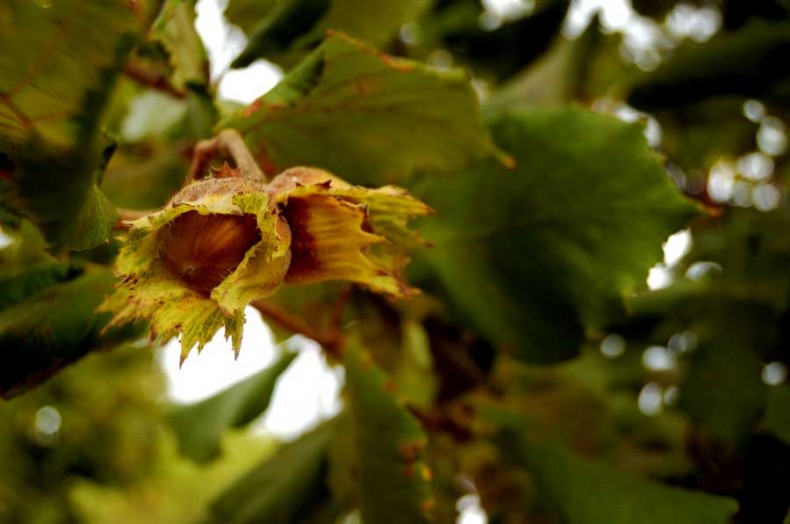Growing Hazelnuts
By Carla Burgess
Hazelnuts are large, colony-forming shrubs that produce a bounty of small, edible nuts in autumn. Home gardeners can choose from two native species or a host of hybrids and named varieties. The sweet nuts, called hazelnuts or filberts, are rich in protein and unsaturated fat. They are a versatile food enjoyed roasted or added to salads, sauces and entrées. The nut is a staple ingredient in commercial confections such as praline, tortes and sweet spreads (such as Nutella). Commercial hazelnut production in the United States is concentrated in Oregon and Washington. A consortium of research organizations is betting on hazelnuts as a future sustainable crop throughout the country. The Arbor Day Foundation is selling seedlings of a new hybrid and encouraging home gardeners to help test their potential in various regions and report their results (for information, visit srborday.org).
Hazelnuts can be grown as orchards, windbreaks and wildlife plantings (deer, squirrels, chipmunks, jays, turkeys and pheasants are among the animals that eat the nuts, also called mast). Choose a site with average, well-drained soil and in full sun for best mast production. Plant more than one, as hazelnuts are not self-pollinating. Trees will grow to about 10 feet tall. Nuts ripen in autumn and can usually be harvested from the ground by hand. Use mesh netting (about ¾-inch) to protect your crop from wildlife. Young trees may produce nuts in as little as two years. You can keep thickets in bounds by mowing the perimeter. Learn more about hazelnuts.
Hort Shorts
- Chalk maple (Acer leucoderme), a relative of the sugar maple, makes a wonderful shade tree for small spaces. It has spectacular autumn foliage in hues of yellow, orange or red. This native tree ranges from 12 to 30 feet tall. It is usually multi-trunked, with smooth, pale-gray or whitish bark, and is suitable for sun or shade.
- Horseradish is a perennial vegetable whose roots are grated to produce the spicy condiment. The roots can be divided and replanted for the next year's crop. Because horseradish is an aggressive spreader, it is best to plant it in its own bed with a barrier or put it in a whisky barrel planter or other deep container. Plant new roots in the spring and harvest in late fall after frost for best flavor.
- Look for pruners and loppers with racheting mechanisms to help boost cutting power. They grip and hold, allowing you to release and squeeze again to prune a single branch progressively and more easily.
- For indoor sowing of spring vegetable and flower seeds, use a soilless growing medium. Keep the mix moist but not saturated to prevent damping-off, a fungal disease. Air circulation is also important for preventing fungal infections.
- When ordering plants by mail, be shrewd when bargain shopping. If a plant is significantly cheaper in one catalog, compare the size (usually given in pot size or age of plant) between catalogs. If the catalog specifies no size, inquire before ordering.
- Coir is an alternative to peat as a medium for starting seeds and propagating cuttings. The fibrous material comes from the outer husk of coconuts, a renewable resource, unlike peat. Coir is sold in compressed blocks. When soaked in hot water, a brick expands up to eight times its size.
- Japanese flowering apricot (Prunus mume) is a small (10–20 feet) garden tree that produces abundant, fragrant flowers in early to midwinter. Depending on variety, blooms may be white or shades of red and pink, and single, semi-double or double in form. Trees develop a rounded form; some weeping varieties are available. Japanese flowering apricots prefers moist, acidic, well-drained soil in a sunny exposure and are hardy in zones 6–9. Choose a sheltered spot in colder climates. Prune after flowering to ensure an abundant display the next year.
- Understanding the life cycles of weeds is key to controlling them. To view a handy online reference guide to common broadleaf, grassy, woody and vining weeds, along with control measures, visit garden.org.
-
Share this story:




Comments (1)
Angie Richsburg |
September 25, 2023 |
reply